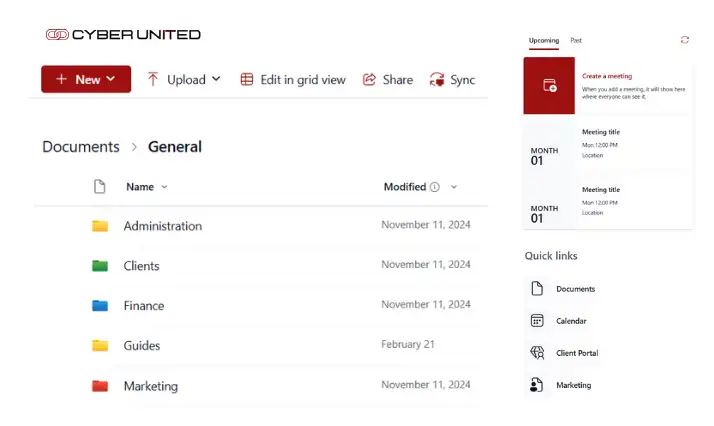
Running a business in today’s fast-paced economy requires more than just ambition. It demands efficiency, adaptability, and the right tools to keep everything moving in sync. But with so many apps and software options available — from project management systems to invoicing tools — many businesses end up spending more time managing their software than managing their actual business.
This is where an all-in-one business platform comes in. By consolidating multiple tools into a single, unified system, it gives you the clarity and control you need to operate smoothly and scale with confidence.
The Challenge of Modern Business Tools
For years, businesses have relied on a patchwork of different apps:
Trello or Asana for project management
Slack or Teams for communication
Xero or QuickBooks for invoicing
Dropbox or Google Drive for file storage
CRM systems for managing customers
While these tools are powerful individually, using too many can cause:
Wasted time switching between platforms.
Duplicate data entered in multiple systems.
Fragmented communication, leading to missed updates.
Subscription overload, where costs creep up without realising.
A report from TechRadar Pro highlights that UK businesses are spending more than ever on software subscriptions, often doubling up on services with overlapping features. For many small and medium-sized businesses, this is simply unsustainable.
What is an All-in-One Business Platform?
An all-in-one business platform combines essential tools into a single hub. Instead of juggling half a dozen apps, you and your team log into one system that does it all.
Typically, these platforms include:
Project & Task Management – Keep work organised with clear deadlines and accountability.
Team Communication – Chat, video calls, and discussions without leaving the platform.
CRM (Customer Relationship Management) – Manage leads, contacts, and sales pipelines.
Invoicing & Payments – Send invoices, track payments, and manage finances.
File Storage & Sharing – Securely store documents and collaborate in real-time.
Automation & Reporting – Eliminate repetitive tasks and gain insights with dashboards.
Think of it as the digital HQ for your business — where everything and everyone connects.
The Benefits of Switching to an All-in-One Business Platform
1. Time Savings
No more bouncing between different apps. Everything is centralised, meaning you can find information quickly and complete tasks without disruption.
2. Lower Costs
Instead of paying for five or six separate tools, you pay for just one platform. Over a year, this can save businesses thousands of pounds.
3. Simplified Collaboration
With one system, your team knows exactly where to find project updates, conversations, and files. This clarity reduces errors and misunderstandings.
4. Improved Customer Experience
By linking CRM with communication and project management, you create a seamless experience for your customers. Every team member has access to the same information, so nothing falls through the cracks.
5. Scalability
As your business grows, your platform grows with you. You can add new team members, automate more tasks, and expand features without having to start from scratch.
Real-World Example: From Chaos to Clarity
Imagine a growing design agency with five employees. They use Slack for messaging, Trello for tasks, Xero for invoicing, and Google Drive for files. Each tool works well, but none of them connect.
The result?
Conversations get lost across apps.
Files aren’t always easy to locate.
Invoices aren’t linked to client projects.
Team members spend too much time switching between tabs.
By moving to an all-in-one business platform, they centralise everything. Tasks link to client invoices, conversations stay tied to projects, and files are stored in one place. The result? Less wasted time and more focus on delivering great work.
Who Can Benefit Most?
Start-ups
When you’re starting out, every pound and every minute counts. An all-in-one platform helps you launch faster without overspending on software.
Small to Medium-Sized Businesses (SMBs)
Growing businesses often struggle with systems that don’t talk to each other. A single platform removes that barrier.
Remote Teams
With a centralised platform, your team can log in from anywhere and still feel connected. No more wondering which tool has the latest update.
Agencies and Consultants
Managing multiple clients becomes easier when projects, files, and invoices all live in the same space.
Key Features to Look For
When evaluating different platforms, pay attention to:
Ease of Use – If your team finds it complicated, they won’t adopt it.
Integrations – While the platform should be all-in-one, it should still connect with essentials like email or accounting tools.
Customisation – You’ll want workflows that adapt to your business model, not the other way around.
Data Security – Look for reliable permissions management and compliance with UK data protection standards.
Scalable Pricing – Make sure you only pay for what you use, with room to grow.
Why Businesses Are Making the Switch
The shift to unified platforms isn’t just a passing trend. It’s a response to the real challenges businesses face daily.
Work-from-home culture has made centralisation essential.
Subscription fatigue means businesses are rethinking how many tools they truly need.
Customer expectations for fast responses and accurate service push companies towards better systems.
According to UK GOV Business Statistics, SMEs make up over 99% of the UK’s business population. For many of them, the right platform could mean the difference between staying lean and getting overwhelmed.
How to Transition Smoothly
Shifting your entire business into a new platform can feel daunting. But with the right approach, it can be smooth and rewarding.
Audit Current Tools – List what you use now, what you like, and what’s not working.
Prioritise Needs – Identify must-have features versus nice-to-have extras.
Plan the Migration – Move files, projects, and customer data step by step.
Train Your Team – Provide training so everyone feels confident.
Monitor & Adjust – After launch, review usage and tweak workflows as needed.
The Future of Business Management
We’re moving towards a world where businesses want fewer, more powerful tools. The all-in-one business platform is at the heart of this shift, enabling companies to focus on their goals instead of their software.
Whether you’re just starting out or managing a growing team, the benefits are clear: simplicity, savings, and smarter collaboration.
Ready to Simplify Your Business?
If you’re tired of juggling multiple tools and want a system that works for you instead of against you, it’s time to explore an all-in-one platform.
👉 Discover how our business platform can streamline your operations today
With everything in one place, you’ll spend less time chasing tasks and more time growing your business.
